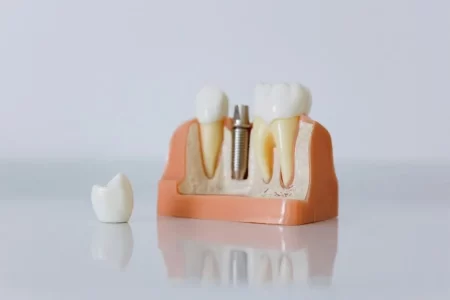How to Explain Dental Insurance Benefits Clearly and Confidently?
- Updated on: Aug 20, 2025
- 3 min Read
- Published on Aug 20, 2025

Dental insurance can be confusing for patients, and it often falls on dental office staff to clarify coverage details. In fact, about two out of every three American adults carry dental insurance, so nearly every dental practice must address benefit questions regularly. When patients don’t understand their coverage, they may delay or decline needed treatment, or feel frustrated by unexpected bills. By explaining dental insurance benefits clearly and confidently, your team can improve patient satisfaction and trust, boost treatment acceptance, and avoid out-of-pocket surprises. This guide provides actionable strategies for dental providers and staff to effectively communicate coverage details, including deductibles, co-pays, exclusions, waiting periods, and annual maximums. We’ll also emphasize staff training, patient-focused communication, and providing clear estimates (with no surprises). Let’s dive in.
Train Your Dental Team
Before talking to patients, your team should be trained. Everyone, from the front desk to the back office, should know how to explain insurance basics.
- Always call costs an “estimate.” For example: “We estimate your insurance will pay about 80%.”
- Use simple words. Instead of “co-insurance,” say: “Insurance pays part, and you pay the rest.”
- Create short talking points everyone can use so patients hear the same message.
- Have one person in the office who can handle tough questions, like your insurance coordinator.
Check Insurance Ahead of Time
Be ready before you talk to the patient. Check their insurance details early, before they arrive.
- Collect insurance info when booking their visit.
- Use a portal or call the company to check coverage.
- Look for:
- Deductible amount
- Co-pay or percent they owe
- How much of their yearly max is used
- Waiting periods or exclusions
- Deductible amount
When you’re prepared, it’s easier to give simple, accurate cost estimates.
Use Simple Words to Explain Terms
Patients don’t know insurance words. Use examples and plain language.
- Deductible: “This is the amount you pay first each year. Then insurance starts to help.”
- Co-pay/Co-insurance: “Insurance pays a percent, and you pay the rest.”
- Annual Maximum: “This is the most insurance will pay in a year.”
- Waiting Period: “Some policies get you to wait a few months before paying for big treatments.”
- Exclusions or Limits: “Some things, such as whitening, aren’t included. Others are covered only every few years.”
Check in frequently and inquire if they have questions. Most won’t claim to be confused unless you ask.
Give a Clear Estimate
Go over the expected cost with the patient. Print it or email it so they have a copy.
Include:
- Full cost of the treatment
- What insurance is expected to pay
- What the patient might owe
- A short note saying this is only an estimate
For example: “Your crown costs $1,000. Insurance may pay $600. Your part is about $400.”
Also explain:
- “If insurance pays more, we’ll refund you.”
- “If they pay less, we’ll bill you the rest.”
- “We offer payment plans if you need help.”
This keeps everything clear and helps avoid problems later.
Use the Right Tone and Place
Talking about money makes some people nervous. How and where you talk matters.
- Speak in a private space, not at the front desk.
- Speak kindly to them, using phrases such as, “We’re here to help,” or “We want you to feel good about continuing forward.”
- Let them know that your care is in response to their health needs—not insurance.
- Patients are more likely to question and proceed with care if they feel respected and safe.
When patients feel respected and safe, they’re more likely to question and proceed with care.
Use Tools to Help
Don’t just talk use other tools to help explain.
- Use your software to check benefits and print easy-to-read estimates.
- Create a simple handout that explains insurance terms.
- Add an FAQ section on your website.
You can also work with a dental insurance billing company or dental medical billing service. These teams:
- Check insurance benefits
- Send clean claims
- Follow up on unpaid claims
With expert help, your in-office team can focus more on patients while billing experts handle the rest.
Connect Coverage Clarity to Oral Health
When patients understand their dental insurance, they’re more likely to schedule preventive cleanings, exams, and follow-up treatments on time. Clear communication about benefits reduces fear of unexpected costs and helps patients see dental care as an investment in their overall health, not just an expense. By pairing strong patient education with professional dental insurance billing services, practices can keep their focus on improving oral health outcomes while ensuring payments flow smoothly. This balance builds trust, encourages timely care, and keeps patients smiling with confidence.
Final Tip
Being ready, being kind, and being clear matter most. Do not use big words or complicated sentences. Just simply tell things in a peaceful and kind manner.
When your staff employs these steps, patients will feel more confident, informed, and prepared to say yes to care. They’ll also be happier with how your office manages billing.
If you’d like to provide your patients with more clarity and enhance the way your office processes billing, consider hiring a staff that provides dental insurance billing services. It’s one of the best methods for keeping your office efficiently running and your patients smiling.












